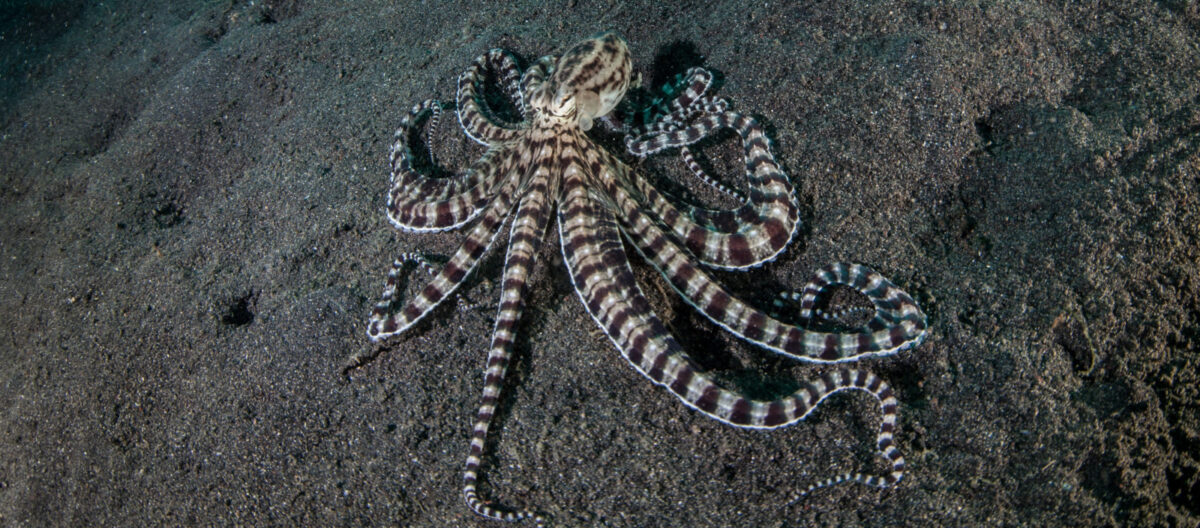Why the Mimic Octopus is the Ultimate Master of Disguise
The mimic octopus is tricky and lovable

Blog updated in April 2022 with more mimic octopus fun facts!
The animal kingdom is packed with creatures that use strange and unusual methods to trick predators. From finding expert camouflage to playing dead, deceit is a common way to avoid becoming someone’s snack.
But when it comes to trickery, there is one animal that rises above the rest: the mimic octopus.
Here’s the story of a cephalopod that has taken the field of deception to a whole new level. So sit back and learn from the best (and don’t forget to take notes!)
Meet the mimic octopus
First discovered in Indonesia in 1998, the mimic octopus (Thaumoctopus mimicus) lives in the shallow waters in the Indo-Pacific. They are relatively small, only about two feet in length, and are pale brown in color with a number of brown and white stripes. Like many other cephalopods, the mimic octopus has color-changing cells, or chromatophores, covering its skin. This allows the animal to quickly change color by expanding or contracting the cells, and ultimately blend into its environment.
But the mimic octopus takes the deception a step further. In addition to just changing its color and texture, the animal will change the way it moves its arms to impersonate a variety of other marine species. It can “mimic” 15 different species (that we know of)!
Here are some of the more notable species the mimic octopus imitates:
- Lionfish: By spreading out its arms and propelling itself through the water column, the mimic octopus resembles the brown and white striped lionfish. Since lionfish are known for their very sharp and highly venomous spines, this deters other animals from attempting to prey on the octopus.
- Sole (flatfish): The mimic octopus can hurriedly glide over the ocean floor by pulling its arms flush against its’ body and flattening out to resemble a sole. This particular flatfish is poisonous, so imitating the fish’s leaf-life shape helps keep predators at bay.
- Sea snake: If threatened, the mimic octopus will pull six of its arms into its burrow, leaving two arms resting on the sandy bottom. The undulating, black and white banded arms look remarkably like an extremely venomous sea snake, encouraging would-be predators to scatter.

Why be a copy cat?
Divers have reportedly seen mimic octopuses imitating even more wild species, such as anemones, jellyfish, feather stars, giant crabs, mantis shrimp, seahorses and more. Scientists suggest that the mimic octopus may choose which animal to impersonate based on which predator is hovering nearby. For example, when bullied by territorial damselfish, an octopus was seen “transforming” into a sea snake, a well-known predator of damselfish.
The ability to impersonate other dangerous animals is particularly helpful in the shallow, sandy environment that the mimic octopus calls home. Where other octopuses generally like habitat with complex structure like reefs to hide in, the river mouths and estuaries the mimic octopus frequents generally lack places to squirrel away in. By imitating toxic animals like the sea snake, lionfish and sole, mimic octopuses can protect themselves from predators while vulnerable in the open ocean.
The mind-blowing creativity of the mimic octopus makes it stand out amongst the deceptive creatures of the animal kingdom. And today, of all days, is a time to channel your inner mimic octopus and embrace all methods of trickery.
Can’t get enough weird and wild octopuses? Check out the dumbo octopus, the blue ringed octopus and the paper nautilus.